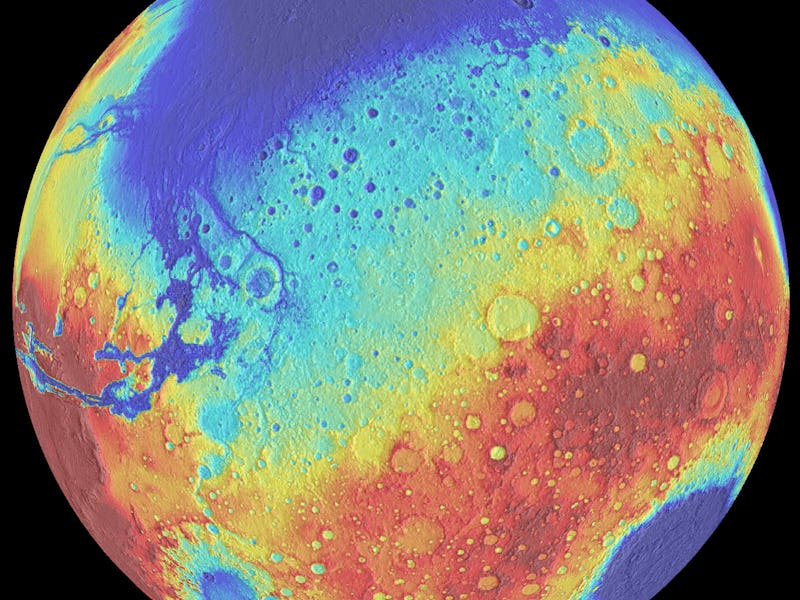There is a controversial theory in the scientific community that a parallel series of bombardments formed the solar system, but new evidence released on Tuesday of Mars’ impact history may finally give scientists the answer for which they’ve been searching.
A team from the Southwest Research Institute and the University of Arizona have mapped Mars’ impacts and found five major historical events, some of which show up in blue in the image below with the Borealis basin at the top, Hellas to the bottom right, and Argyre to the bottom left. Not shown are Utopia, which is now buried, and Isidis.
Mars impacts over time.
Bill Bottke, lead author of the research, found that Borealis is the largest crater and is estimated to have occurred about 4.5 billion years old — that’s about as old as the planet itself. He also deduced that the fragments from that impact arrived on Earth, explaining some of our own craters and their material makeup.
There was then a lull of about 400 million years — known as “the doldrums” — and the Hellas, Isidis, and Argyre craters came along somewhere between 3.8 and 4.1 billion years in Mars’ life, according to previous studies.
“We refer to the period for the later impacts as the ‘Late Heavy Bombardment,’” Bottke says. “The new results add credence to this somewhat controversial theory. However, the lull itself is an important period in the evolution of Mars and other planets.”
As Bottke is saying, if these estimates are correct, then Mars’ impact history would mirror the impacts on the Moon, Mercury, and the asteroid belt, leading the team to believe that the first wave of impacts could finally put a time stamp on the formation of the inner planets, or at least, bring them a little closer to the beginning of the solar system’s existence.
